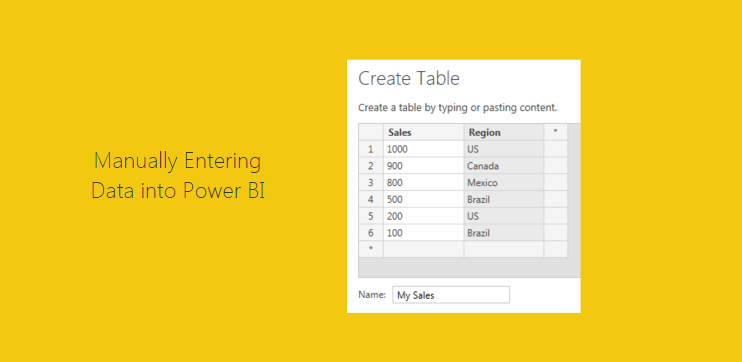
There are often times when you need a small data set in order to make a visual behave exactly how you want it to. This may mean you need a small table to represent a range of numbers or text values.
Here are the Resources for this tutorial:
- Power BI Desktop (I’m using the March 2016 version, 2.33.4337.281) download the latest version from Microsoft Here.
To enter your own data Click the Enter Data button on the Home ribbon.
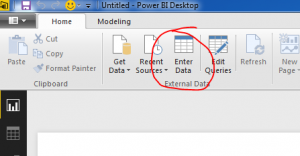
Next you are prompted with the Create Table window. In this window you are given the layout of a unfilled table. To begin entering data you can click in the first cell in Column one and start entering data. By pressing enter a new cell will populate below. You can Rename the column by double clicking the column name. To add a second column you Click on the * symbol next to your existing column. Finally to edit the table name you can type in the desired table name in the Name input box in the bottom left hand portion of the window.
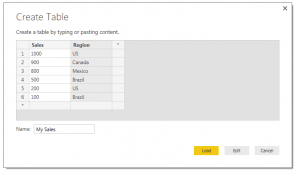
Finally, you can either to choose to Load the data as is or Edit the data to make additional changes (this can be useful to edit the data types of each column or to populate equations in subsequent columns). For the sake of this tutorial we will simply load the data. Click Load to load the data into the data model.
Now drag over the columns into the page view to begin generating visuals. By default PowerBI makes a table of data to show you the values you just entered.
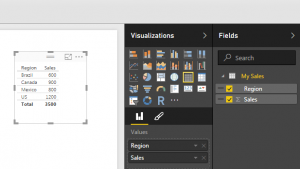
Select the table visual (you know it is highlighted when it has the trim boarder as shown above) and Click the Doughnut Visual. This transforms the data into a doughnut, and who doesn’t like a nice data doughnut? Click anywhere in the page to de-select the new doughnut visual. Add a second table by dragging over he Region and Sales columns. We can now see the pretty graphic and the numbers supporting that visual.
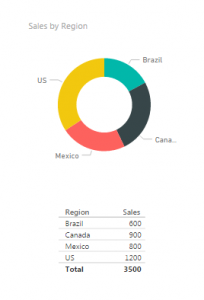
I bet you didn’t notice that something changed here. Look closely at the data we see now vs. what we entered earlier. Go ahead, scroll up, I’ll wait… Did you catch it?
We now have 5 rows of data but we entered 6 before. That is because the Sales column is a number column and can be aggregated. Look in the fields column and you see there is a little sum symbol in front of the Sales column. This means that this column has a default summarization associated. To see what is the default summarization highlight Sales by clicking on the column name in the grey area. Then Click the ribbon titled Modeling, and there it is in the properties section the Default Summarization is Sum. Every time you use the Sales column it will be summarized in the tables and visuals views. Our visual table shows Brazil with a total sales of 600, because we had two Regions labeled as Brazil 500 and 100.
Now you can click on any of the data points in the doughnut. Notice the table automatically filters down to only show the areas you selected.
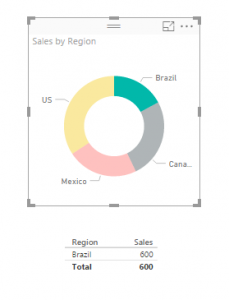
ProTip: you can select multiple selections by holding down CTRL and selecting multiple items in the visual. You can only do this inside of one visual. As soon as you click another visual all filtering will disappear.
Again, I hope you enjoyed this quick tutorial. If you liked it make sure you share it below.


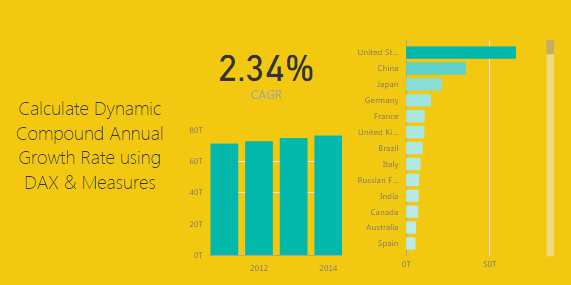
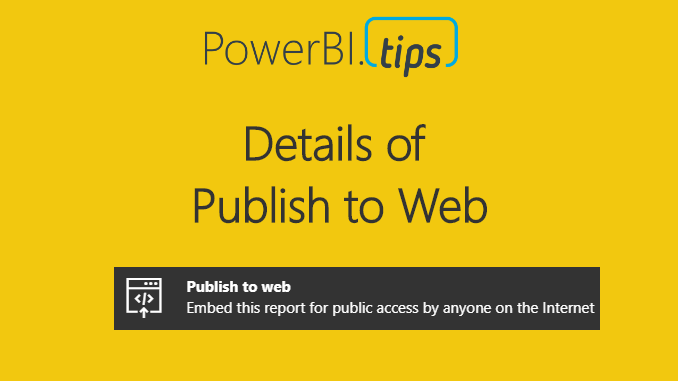
Hello,
It is pretty easy and handy, but how can i edit those tables created with the “Enter Data” once they are loaded?
I can’t find how to.
Thank you
Raphael, thanks for your question. In order to edit the data that has been entered you will click the Edit Queries button on the Home ribbon. This will open up the Query Editor. On the left hand side of the Query Editor screen you should see a section called Query Settings. Under the section called Applied Steps there will be a step called Source. Click on the Little Gear next to the word Source. This will re-open the Create Table dialog screen and allow you to edit the manually entered table.
Do you know if there’s any way possible to make End Users enter data into a report?
Best,
Andreas
At this time there is not a way for end users to directly enter data into a report. However, you can create a report the relies on an excel workbook that the user can enter data into. Then the user can refresh the report and the newly added data can be brought into the report. See this tutorial on how to connect to an excel report, https://powerbi.tips/2016/09/loading-excel-files-from-sharepoint/